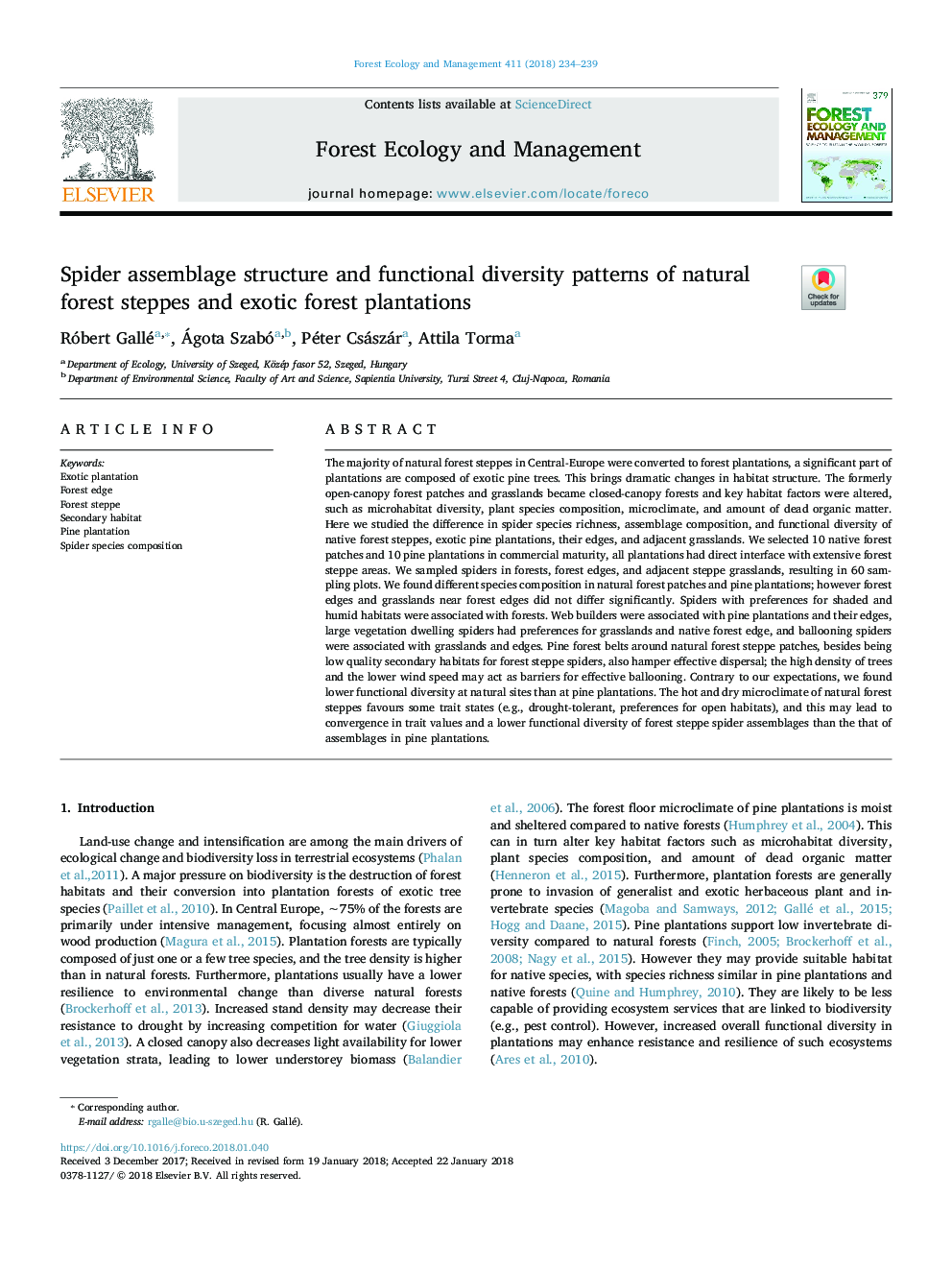| کد مقاله | کد نشریه | سال انتشار | مقاله انگلیسی | نسخه تمام متن |
|---|---|---|---|---|
| 6541839 | 1421347 | 2018 | 6 صفحه PDF | دانلود رایگان |
عنوان انگلیسی مقاله ISI
Spider assemblage structure and functional diversity patterns of natural forest steppes and exotic forest plantations
ترجمه فارسی عنوان
ساختار مونتاژ عنکبوتی و الگوهای تنوع عملکردی استپ های جنگلی طبیعی و گیاهان جنگلی عجیب و غریب
دانلود مقاله + سفارش ترجمه
دانلود مقاله ISI انگلیسی
رایگان برای ایرانیان
کلمات کلیدی
گیاه عجیب و غریب، لبه جنگل، جنگل استپ زیستگاه ثانویه، کاشت کاج، ترکیب گونه های عنکبوتی،
موضوعات مرتبط
علوم زیستی و بیوفناوری
علوم کشاورزی و بیولوژیک
بوم شناسی، تکامل، رفتار و سامانه شناسی
چکیده انگلیسی
The majority of natural forest steppes in Central-Europe were converted to forest plantations, a significant part of plantations are composed of exotic pine trees. This brings dramatic changes in habitat structure. The formerly open-canopy forest patches and grasslands became closed-canopy forests and key habitat factors were altered, such as microhabitat diversity, plant species composition, microclimate, and amount of dead organic matter. Here we studied the difference in spider species richness, assemblage composition, and functional diversity of native forest steppes, exotic pine plantations, their edges, and adjacent grasslands. We selected 10 native forest patches and 10 pine plantations in commercial maturity, all plantations had direct interface with extensive forest steppe areas. We sampled spiders in forests, forest edges, and adjacent steppe grasslands, resulting in 60 sampling plots. We found different species composition in natural forest patches and pine plantations; however forest edges and grasslands near forest edges did not differ significantly. Spiders with preferences for shaded and humid habitats were associated with forests. Web builders were associated with pine plantations and their edges, large vegetation dwelling spiders had preferences for grasslands and native forest edge, and ballooning spiders were associated with grasslands and edges. Pine forest belts around natural forest steppe patches, besides being low quality secondary habitats for forest steppe spiders, also hamper effective dispersal; the high density of trees and the lower wind speed may act as barriers for effective ballooning. Contrary to our expectations, we found lower functional diversity at natural sites than at pine plantations. The hot and dry microclimate of natural forest steppes favours some trait states (e.g., drought-tolerant, preferences for open habitats), and this may lead to convergence in trait values and a lower functional diversity of forest steppe spider assemblages than the that of assemblages in pine plantations.
ناشر
Database: Elsevier - ScienceDirect (ساینس دایرکت)
Journal: Forest Ecology and Management - Volume 411, 1 March 2018, Pages 234-239
Journal: Forest Ecology and Management - Volume 411, 1 March 2018, Pages 234-239
نویسندگان
Róbert Gallé, Ágota Szabó, Péter Császár, Attila Torma,
